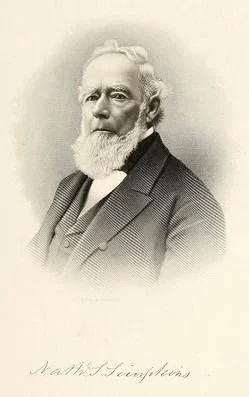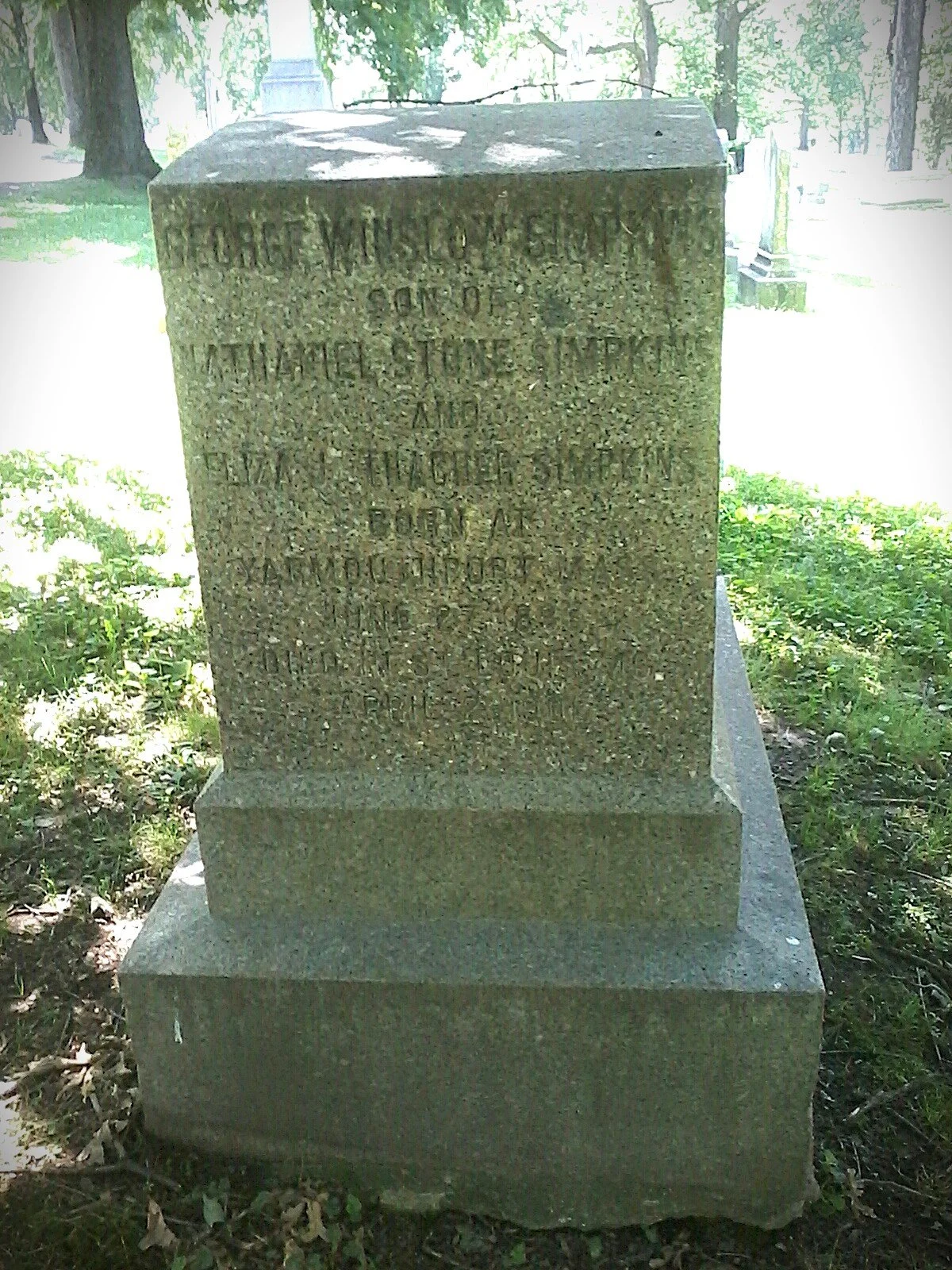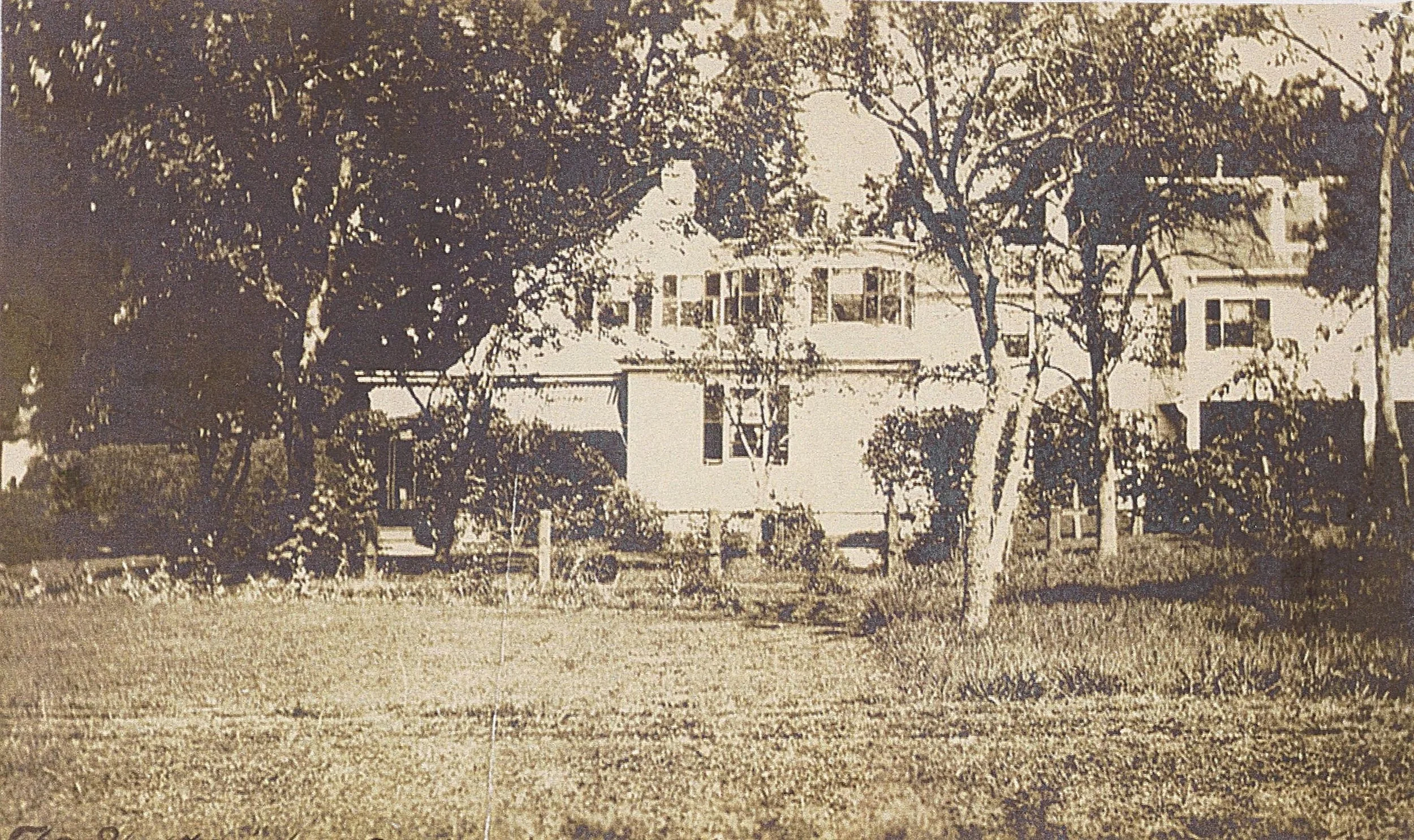The house at 8 Strawberry Lane in Yarmouth Port has become well known, on and off Cape Cod, as the Edward Gorey House. The entertaining exhibits celebrate and preserve the life and works of the unique author, illustrator and theatrical designer who lived there with his multiple cats from 1986 until his death in April of 2000. Fascinating as Gorey was, he was just one of the colorful owners in the history of this home.
Nathaniel Stone Simpkins
The front part of the house was built on the east side of what is now the Yarmouth Port Common, by Captain Edmond Hawes, probably about 1820. At the time the Common was a swamp on the north end and a shallow, clay bottomed pond on the south end. Little is known about Edmond except that he died in 1831. The house was sold to Nathaniel Stone Simpkins on April 5, 1830. He was born in Brewster in 1796 and married to Eliza Jane Thacher, daughter of Henry Thacher who lived in the handsome house at the top of the Common. They had six children and Eliza died in 1836, shortly after the youngest, George, was born. In 1852 Nathaniel married Mary Sears. During his lifetime he improved and remodeled the house, adding what is now the middle portion, and planted trees and shrubbery, including boxwood transplanted from the house next door. Nathaniel was a prosperous businessman in Boston, as well as on the Cape. He founded the Yarmouth Register and Barnstable County Advertiser, and was a director the First National Bank of Yarmouth Port and of the Cape Cod Railroad. He was also a civic leader serving in State House of Representatives and involved in the establishment of schools, the New Church and the Yarmouth Port Library. We don’t know if he lived full time on Strawberry Lane, but he spent his old age there. His second wife, Mary, who was twenty one years younger, died in 1886, and he died in 1887. His youngest son George took possession of the house.
The Simpkins family at home in the 1860s.
An 1860s view of 8 Strawberry Lane.
George Simpkins, like many young men of the time when the maritime trade was declining, had left the Cape and gone west. He settled and prospered in St. Louis, and became the treasurer and vice-president of the Hydraulic Press Brick Company. He married a St. Louis girl in 1865, Mary Louise Michael, and they had four sons and three daughters. They were prominent members of St. Louis society, but George never lost his attachment to Yarmouth Port and brought his family to the old homestead to spend the summers. They sometimes traveled in a private railway car, and brought with them their cook, Laura, as well as their coachman and a succession of sewing girls from an orphanage. Sometime in the late 19th century they added the back section to the house which included more bedrooms and a large new kitchen with a pantry featuring a small, high door for ice deliveries. The second floor now had seven bedrooms and three baths, all with marble wash basins and claw-footed bathtubs. There were two more rooms on the third floor, likely for the servants. George died in St. Louis on April 2, 1901. In a letter in the Yarmouth Register dated April 10, T. W. Swift, pays tribute to him, remarking that “he will be greatly missed at Yarmouth where his coming was one of the most charming features of summer life.” After his death, the family continued to summer on the Cape. George’s widow, Mary Louise, died in 1909.
George Simpkins’ gravestone in St. Louis.
The three daughters, Louise, born 1872, Olive, born 1879, and Ethel, born 1882, seem to have been more attached to Yarmouth Port than the surviving brothers who spent little time there. The local papers were full of chatty information and from 1899 through 1914 there are various items about the family’s arrivals, departures and activities. In later years “Miss Louise” and “Miss Olive” were the only family members who continued to summer in the old family home. In 1909 Ethel married William Griffith McRee, Jr. in St. Louis. He was a well-to-do business man who played polo, but he was Catholic so the family wasn’t entirely pleased with the match. The McRees built their own summer home, more or less copied from the design of the old homestead, on the rise behind it and adjacent to the library. William later lost heavily in the stock market crash and the couple became full time residents here. Sally White, whose mother was Martha White, long time librarian at the Yarmouth Port Library, remembered all three sisters well. She said that Louise was short, plump and lively while Olive was tall, slender and shy. Although Louse was once engaged (her fiancé died of pneumonia a month before the wedding), neither of them ever married. The sisters inherited money from an uncle who was in copper mining in Colorado, and presumably from their father, and this allowed them to live comfortably, both here and in St. Louis where they had an apartment in a hotel.
A side view of the house, with its many additions, dated 1912.
Sometime in the 1920’s Louise and Olive took up “motoring” and bought a car. Louise never learned to drive so Olive was always at the wheel. With their increased mobility they shopped in Hyannis, referring to their outings as “motoring to market.” They joined the Beach Club in Centerville and much of their social life revolved around it. They also enjoyed taking road trips. On one trip in 1928 or 1929, they went to Virginia and visited Mount Vernon where they purchased a small southern magnolia tree in a pot. It was planted on the sheltered south side of the Yarmouth Port house and has grown into a large and striking feature of the landscape.
Passport photos of sisters Olive (left) and Louise Simpkins in the 1920s.
Louise died in July 1952. Olive continued to spend time on the Cape, but sometimes stayed at the Colonial House Inn (now Chapter House) rather than be alone in the big house. She died in Yarmouth Port in March of 1962. Her obituary describes her as a member of a prominent St. Louis family and a member of the Country Club and Christ Cathedral, Episcopal in her native city. Ethel didn’t want the family house to be sold, and it remained empty except for a family of raccoons. Ethel occasionally had small tea parties in the south front parlor, and she sold flowers from the magnolia tree at the Yarmouth Port Library for $1.00 apiece. She requested that her funeral be decorated with “whatever was growing in the yard at the time.” Remarkably, when she died on September 15, 1976, the magnolia tree produced a single bloom, a rare occurrence so late in the season, and her friends climbed out a third story window to retrieve it for her memorial service.
Stenciling inside the 8 Strawberry Lane. Photo courtesy of the Edward Gorey House Museum.
Ethel’s heirs (she was a widow with no children) inherited the property, by then very overgrown and neglected, and put it on the market. In the summer of 1979, Edward Gorey drove by, was attracted by the unkempt yard and air of genteel decay and bought it forthwith. He had considerable interior work done but for years was comfortable with the somewhat gothic exterior. When the wall paper was removed from the south front parlor, it was found that the walls underneath were decorated with stencils, probably dating from the time of the first owner, Captain Hawes.
They remain today as a reminder of the long history of the house.
Written by Elizabeth Morton






